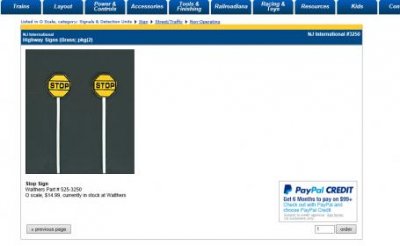p51
One Too Many
- Messages
- 1,119
- Location
- Well behind the front lines!
I'm in the process of building my dream model RR layout and I will eventually be looking to make a couple of road signs.
I want everything to be as historically correct as possible as the layout will take place in 1943, but I started wondering about road signs back then.
I'm assuming that road signs didn't have 'unpainted' backs like they do now? Were the backs painted in the same color as the front, if painted at all?
How common were glass reflectors within road signs? I know they were relatively common for RR crossing signs, but what about speed limits and such?
Also, can anyone show me a speed limit sign that mentions the WW2 mandated road speeds? I'd love to recreate one of those but can't find one online anywhere...
I want everything to be as historically correct as possible as the layout will take place in 1943, but I started wondering about road signs back then.
I'm assuming that road signs didn't have 'unpainted' backs like they do now? Were the backs painted in the same color as the front, if painted at all?
How common were glass reflectors within road signs? I know they were relatively common for RR crossing signs, but what about speed limits and such?
Also, can anyone show me a speed limit sign that mentions the WW2 mandated road speeds? I'd love to recreate one of those but can't find one online anywhere...







